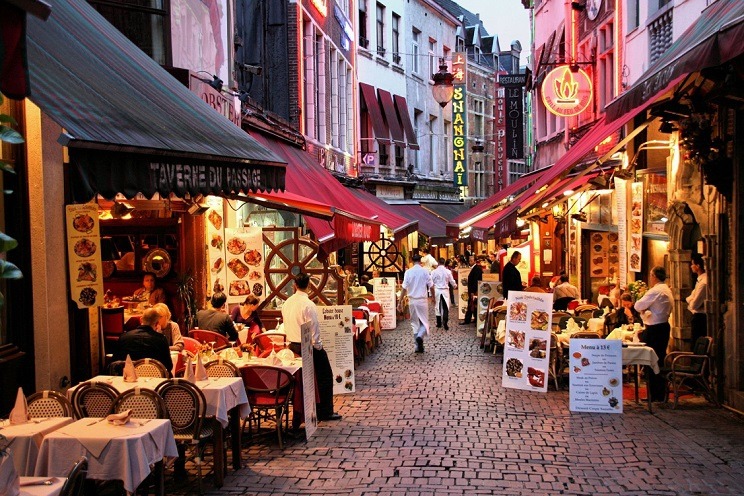The heart of the old Brussels is a maze of narrow streets and blind alleys. It used to be the belly of Brussels with street markets and shops selling meat and vegetables. But then the quarter was gradually abandoned in the 1950s as people moved out to the suburbs.
In 1958, the Brussels journalist Louis Quiévreux launched a campaign to stop property developers from tearing down the old houses. He named the area: l’Ilôt Sacré, the Sacred Island. Not to be touched. The city mayor liked the idea so much that he announced an even more ambitious plan to protect seven different ‘islands’.
The local shopkeepers set up an organisation called the Commune Libre de l’Ilôt Sacré to protect the area and revive old folklore traditions. But the Sacred Island has now become a bit of a tourist trap. Overcrowded. Overpriced. Most of its 100 or so restaurants are disappointing, locals tell you, apart from Vincent, Aux Armes de Bruxelles and maybe Chez Léon.
But it is still interesting to visit the area on a quiet day and wander down the narrow old streets like Rue des Bouchers and Rue de la Fourche. Along the way, you come across atmospheric old alleys and hidden bars, saved by a journalist’s campaign.
Derek Blyth’s hidden secret of the day: Derek Blyth is the author of the bestselling “The 500 Hidden Secrets of Belgium”. He picks out one of his favourite hidden secrets for The Brussels Times every day.

